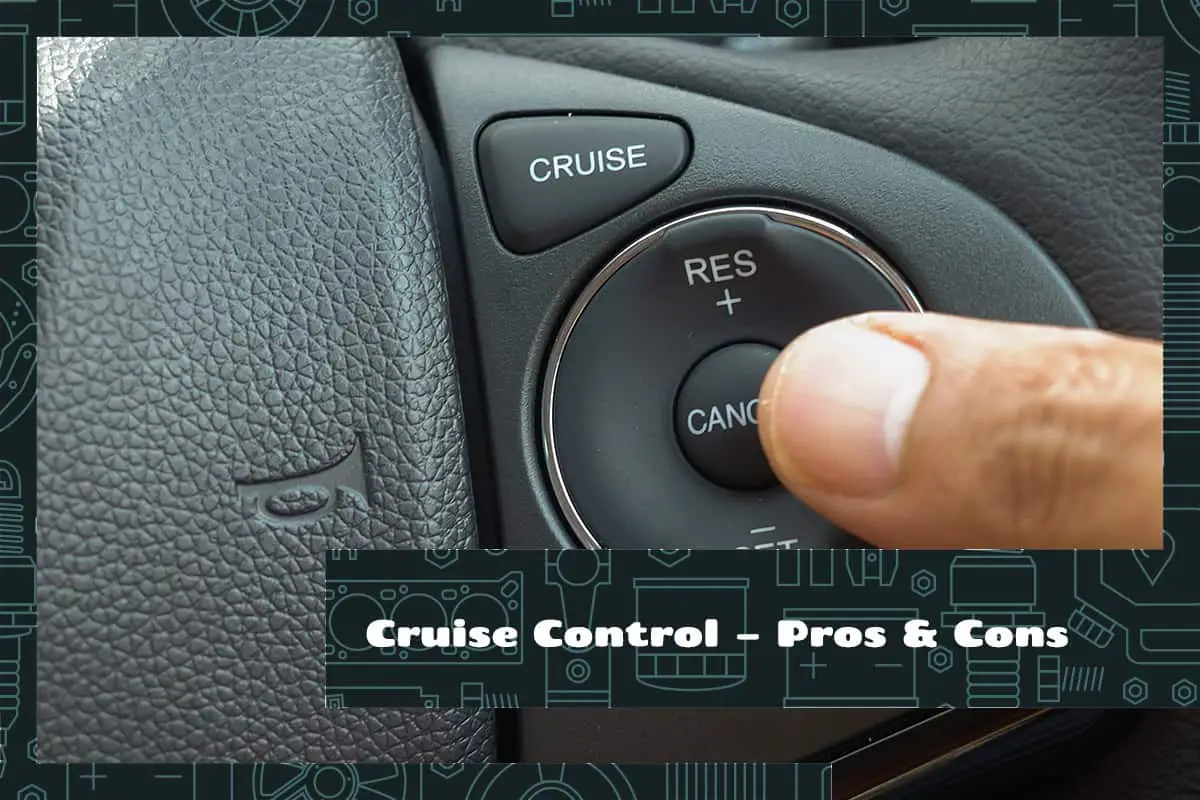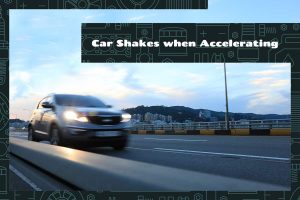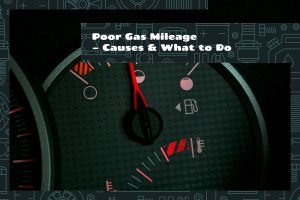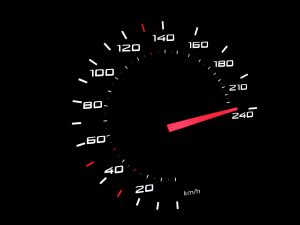Cruise control is a smart feature in modern cars that lets you set a specific speed your car will maintain without you having to keep your foot on the gas pedal. It’s sort of like setting a pace for a marathon, so you don’t have to think about it constantly.
Here is a quick breakdown of the pros and cons of cruise control:
- Pros: Increased fuel efficiency, reduced driver fatigue, consistent speed maintenance, fewer speeding violations.
- Cons: Potential inattentiveness, inefficiency in city driving, risks in adverse weather, compatibility issues with older vehicles.
In this article, we’ll dig deeper into these advantages and disadvantages and explore the next-generation Adaptive Cruise Control.
A Quick Look at Cruise Control
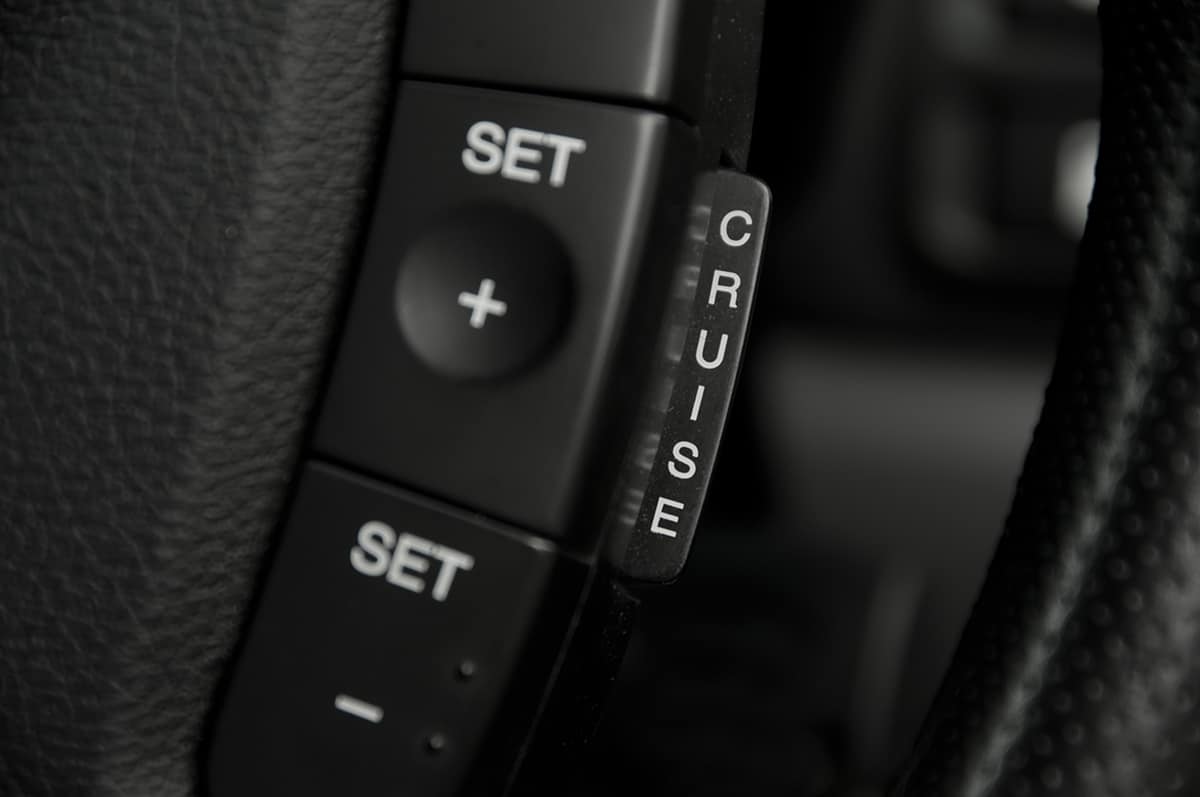
The cruise control system relies on a speedometer and a servo mechanism to work. When you set a speed, the system maintains it by controlling the throttle. If your car goes slower than the set speed, like going up a hill, the system increases throttle to speed up. When going downhill, it reduces throttle to slow down, keeping your car at the same speed you set.
The first rudimentary versions of cruise control appeared in the late 19th century, but the modern version was invented in the 1940s by Ralph Teetor, a blind mechanical engineer. His goal was to stop the jerky speed adjustments made by his chauffeur, which led to the invention of “Speedostat”, later known as cruise control.
Cruise control quickly became popular, especially for highway driving, and was a standard feature in many cars by the 1990s. Over time, technological advancements led to the development of more sophisticated systems. One of these is Adaptive Cruise Control, a more advanced type of cruise control that can automatically adjust the car’s speed to maintain a safe distance from vehicles ahead.
The Advantages of Cruise Control
Cruise control comes with several advantages that make driving not just easier but also safer and more efficient. Let’s look into these benefits in detail.
1. Increased fuel economy
Fuel efficiency is one of the significant benefits of using cruise control. When you manually control your car’s speed, it’s natural to have variations, leading to more fuel consumption. The cruise control maintains a steady speed, reducing fuel usage, especially on long highway drives. This is good for both your wallet and the environment!
2. Reduced driver fatigue
Long hours on the road can make drivers tired and less focused. Cruise control helps by taking over speed management, letting drivers relax their feet and concentrate more on steering and observing the road. This reduces fatigue, helping you stay alert and safer on your journey.
3. Consistent speed maintenance
Humans naturally struggle to maintain a constant speed while driving, especially over long distances. Cruise control, being a computerized system, can keep your car at a steady pace. This consistency makes your driving smoother and even contributes to smoother traffic flow when multiple vehicles use cruise control.
Cruise control is particularly beneficial on highways. Highways are typically long, straight roads with less traffic and few stops. These conditions are perfect for cruise control. By maintaining a constant speed, it aids in overall traffic management and reduces the risk of speeding.
4. Fewer speeding violations
A great benefit of cruise control is that it helps prevent speeding tickets. Since you set a maximum speed for your car, cruise control ensures you don’t accidentally go over the limit. It’s an excellent tool for keeping yourself within the law while also reducing the risk of speed-related accidents.
The Disadvantages of Cruise Control
While cruise control has many advantages, it’s not perfect. There are some disadvantages to consider, especially when it comes to city driving, weather conditions, and the age of your vehicle.
1. Potential inattentiveness
While cruise control can help with driver fatigue, there’s also a risk of becoming too relaxed. Some drivers may pay less attention to the road, thinking that cruise control is doing all the work. Remember, cruise control only manages speed. You still need to steer, brake, and stay alert.
2. Inefficiency in city driving
Cruise control is ideal for highways, but it’s less effective in the city. City driving often involves frequent stops, sudden speed changes, and navigating around other vehicles or pedestrians. Cruise control can’t handle these complexities, so manual control is better in these situations.
3. Risks in adverse weather
Cruise control is not recommended in bad weather conditions, like rain, snow, or icy roads. These situations require delicate control over your vehicle, something cruise control can’t provide. Using it in such conditions can increase the risk of losing control or hydroplaning.
4. Compatibility issues with older vehicles
While most new cars come with cruise control, older models might not have this feature. Even if you can install it, it might not work as efficiently as in newer cars. Also, the installation can be expensive, and there’s a risk of damaging the vehicle if not done correctly.
Practical Tips for Cruise Control
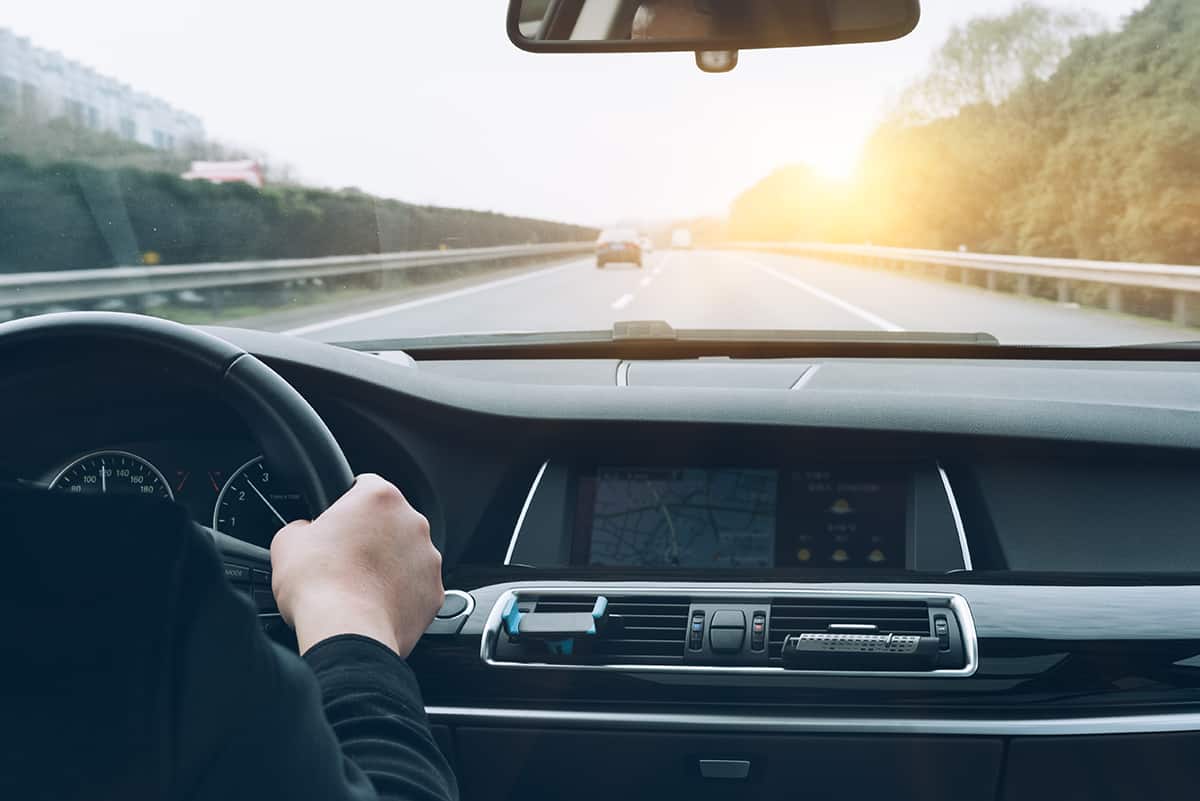
Cruise control is a handy tool, but it requires proper use to reap its benefits. Here are some practical tips to ensure you’re using cruise control effectively and safely:
- Know when to use it: Cruise control is best for long, straight roads with consistent traffic, like highways. Avoid using it in heavy traffic, poor weather conditions, or on curvy or hilly roads.
- Stay alert: Cruise control is not an autopilot. You still need to stay focused on the road, ready to brake, steer, or take over speed control if necessary.
- Set a reasonable speed: Don’t set your cruise control at a speed that’s too fast for the conditions. Always adhere to speed limits and adjust your speed to the traffic, road, and weather conditions.
- Use it to save fuel: By maintaining a consistent speed, cruise control can help improve your car’s fuel efficiency, particularly on long drives.
- Understand its limitations: Cruise control cannot recognize stop signs, traffic lights, or other road hazards. That’s your job. Always be prepared to disengage cruise control quickly if needed.
Adaptive Cruise Control: The Next Generation
Adaptive Cruise Control is a newer, more advanced version of traditional cruise control. Just like its predecessor, Adaptive Cruise Control can maintain a set speed. But it also does something more—it can automatically adjust the speed of your car to keep a safe distance from the vehicle in front of you. Let’s delve into the pros and cons of this innovative technology.
The evolution of traditional cruise control
Unlike regular cruise control, Adaptive Cruise Control uses advanced sensors and sometimes cameras to watch the road ahead. If the car in front slows down, this system slows your car, too, maintaining the safe gap. When the road clears again, Adaptive Cruise Control speeds up back to your set speed. This means you can turn this feature on even in moderate traffic, a huge step up from traditional cruise control.
Advantages of Adaptive Cruise Control
Adaptive Cruise Control brings a new level of safety and convenience to driving. It can help prevent collisions by maintaining a safe following distance, reducing the stress of driving in heavy traffic. It also allows you to relax more without worrying about adjusting your speed frequently. But remember, even with Adaptive Cruise Control, you need to stay alert and ready to react if needed.
Disadvantages of Adaptive Cruise
Despite its benefits, Adaptive Cruise Control also has some drawbacks. For one, it’s usually more expensive both to purchase a new car and to repair if something goes wrong. Some drivers may find the cost not worth the added benefits.
Additionally, while Adaptive Cruise Control technology is pretty smart, it’s not perfect. It might not react to stopped vehicles or non-moving objects like a manual driver would. It can also be thrown off by bad weather or dirty sensors.
FAQs
1. Do cruise control save gas?
Yes, cruise control can save gas. By maintaining a consistent speed, it helps your car use fuel more efficiently, especially during long drives on the highway. This efficiency decreases when roads are hilly or you’re stopping and starting a lot, like in city driving.
2. Should you use cruise control in the rain?
No, using cruise control in the rain is not advised. Wet conditions make roads slippery, requiring you to adjust your speed often and sometimes quite suddenly. Cruise control isn’t able to make these quick, necessary adjustments. Using it could increase the risk of losing control of your car or hydroplaning.
3. Is adaptive cruise control worth it?
The worth of Adaptive Cruise Control depends on your driving conditions and personal preferences. If you often drive on highways or in moderate traffic, ACC can be a big help. It adjusts your car’s speed to keep a safe distance from the car in front, reducing stress and enhancing safety. However, getting ACC for your car often costs more, so consider your budget too.
4. Is adaptive cruise control safe?
Yes, Adaptive Cruise Control can improve safety by maintaining a safe distance from the car in front of you. However, it doesn’t eliminate the need for you to be alert and ready to take control at any moment. It’s a support tool, not a substitute for active, responsible driving. Like any tech, it might have occasional glitches, so always keep your eyes on the road.
5. When to use cruise control?
Cruise control is best used on long, straight stretches of road, like highways, where you don’t need to stop frequently. It’s great for maintaining a constant speed, which can prevent speeding tickets and improve fuel efficiency. However, avoid using cruise control in heavy traffic, bad weather, or on curvy or hilly roads. Always stay fully alert, even when using cruise control.
